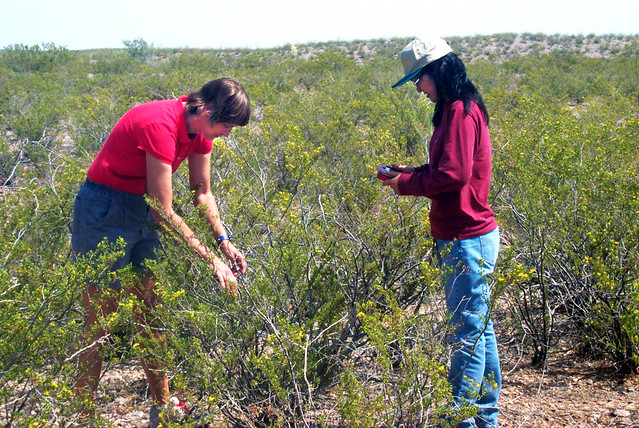
Vast acreage of dry lands may evoke images of a desolate, scorched desert that is uninhabitable to humans. But the arid and semi-arid dry lands of about half of both the United States’ and the world’s land surfaces actually are complex ecosystems made up variously of grasses, shrubs, agriculture, and even urban dwellers. Now, ecological education about these complex dry lands has taken a step forward with the publication of a special issue of the journal Frontiers in Ecology and the Environment.
The special issue was organized by ecologist Debra Peters, USDA Senior Advisor for Earth Observations and Lead Principal Investigator of the Jornada Basin Long Term Ecological Research (LTER) Project. LTER is funded by the National Science Foundation (NSF) and based at the USDA-ARS Jornada Experimental Range (“Jornada”) in Las Cruces, New Mexico. Entitled “Emerging Perspectives and Shifting Paradigms in Water-Limited Systems,” the special journal issue includes seven scientific papers on new paradigms for dryland ecology and management.
In the special issue, the authors broaden the traditional framework for studying dry lands based on desertification to provide a comprehensive and improved approach for understanding, managing and predicting complex dryland dynamics. They provide new perspectives for the dynamics of how water and wind move material across dry lands in the context of historic environmental conditions, current climate extremes and changing patterns of land use.
The new framework can be used to assess dryland ecosystem services, inform land management decisions, and improve the ecological literacy of future generations living on dry lands.
The articles in the special issue were authored by ARS Long Term Agro-ecosystem Research (LTAR) Unit scientists at Jornada, including Peters and unit head Kris Havstad, and their colleagues at New Mexico State University, Arizona State University, the University of Arizona, the U.S. Geological Survey, the University of California at Los Angeles, and the Asombro Institute for Science Education.
The guest editorial was contributed by Ann Bartuska, USDA Deputy Under Secretary for Research, Education and Economics.
The special issue represents collaborations among partners at, and funding by, the USDA-ARS LTAR program, the NSF's LTER Program, and New Mexico State University.
